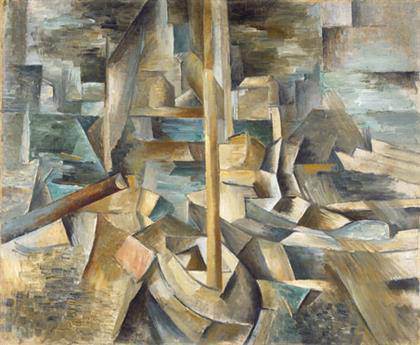
Alexander Calder, Brasilia, 1965.
Collection Fondation Pierre Gianadda, Switzerland
© 2014 Calder Foundation, New York / Artists Rights Society, New York.
Photo: Olivier Middendorp

Alexander Calder, Untitled II, 1970.
Private Collection, London
© 2014 Calder Foundation, New York / Artists Rights Society, New York.
Photo: Olivier Middendorp
Alexander Calder at the gardens of the Rijksmuseum Fourteen monumental sculptures by Alexander Calder (1898-1976) take over the Rijksmuseum’s ‘outdoor gallery’ for the largest freely accessible outdoor exhibition of his work to date. June 19 – October 5, 2014.]]>
Source: Rijksmuseum
This exhibition is the second in a series of annual international sculpture displays, which will be presented in the Rijksmuseum’s gardens over the next four years, made possible with funding from the BankGiro Loterij and the Terra Foundation for American Art.
Calder (1898-1976) is undoubtedly one of the most celebrated inventors of modern sculpture. His cut-out and colorful abstract objects that move in the air or rest firmly on the ground can be found throughout the world, whether in museums or in gardens and public plazas, ranking him among the first and most prolific sculptors of large-scale outdoor works. This show of his monumental sculptures in the gardens of the Rijksmuseum creates a fascinating landscape of stately abstract forms.
Calder was not always an abstract sculptor. Born in America into a family of artists, he lived and worked in the United States and France where he had several studios throughout his life. His first works were delicate figures in steel wire where the artist showed an amazing skill in his use of the material: Calder at that time designed toys, animals, and three-dimensional portraits of his friends, and he articulated characters of a miniature circus, which he presented in public performances with great success. His visit to Mondrian’s studio in Paris in 1930 had a major impact on his art and as a consequence he turned to abstraction. Soon abandoning painting, Calder developed the ambition to create moving coloured shapes. The development in scale of his works led him to invent a parallel category, the stabiles – a term introduced by Jean Arp in 1932 – where large sheets of generally black metal are assembled to create dynamic structures, sometimes in very large dimensions, to which Calder devoted himself from the 1950s onward.
In addition, four Calder sculptures are installed inside the museum, allowing visitors to explore the relationship of Calder’s monumental outdoor sculpture to indoor works, including the mobiles for which he is best known.
Related content
Calder and Abstraction: From Avant-Garde to Iconic (exhibition, 2013-2014)
Follow us on:


